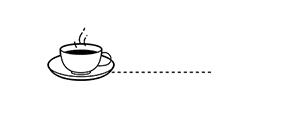Hi guys, Ryan here! As a coffee enthusiast, I’ve spent countless hours in coffee shops, observing the art of coffee making. While baristas generally work tirelessly to craft the perfect cup of coffee, there are a few common mistakes that I notice in coffee shops all the time. While they may seem insignificant on the face of it, unfortunately they impact the quality of the coffee a lot. In this post, I’ll dive into the three most prevalent mistakes that I see baristas making and provide practical solutions to help you to avoid them!
Mistake #1: Tapping the Portafilter After Tamping
One of the most prevalent mistakes I see baristas make all the time (probably without even knowing it) is tapping the portafilter or basket with the tamper after they’ve carefully distributed and tamped the coffee grounds. This seemingly harmless action can have a detrimental effect on the quality of the espresso shot.
When you tamp the coffee, you’re creating a dense, even puck that allows for a controlled, even extraction. Tapping the portafilter after tamping can crack and dislodge this carefully crafted puck, leading to uneven extraction and channelling. Channelling occurs when the water finds a path of least resistance through the coffee bed, resulting in a poor extraction.
Not only does this tapping behaviour negatively impact the flavour of the coffee, but it can also damage your equipment over time. The repeated impact can dent the metal of the portafilter or basket, leading to issues with proper fit and seal within your espresso machine.
How to Avoid This Mistake
The solution is simple, really: avoid tapping the portafilter or basket with the tamper after you’ve tamped the coffee. Instead, focus on achieving a consistent, even tamp the first time around. A lot of barista who I challenge on this say they do it to help with distribution – so make sure that your coffee is well distributed before you tamp. A simple tap with the palm of your hand, or the use of a distribution tool, will solve this.
Mistake #2: Neglecting Steam Wand Maintenance
Another common mistake I’ve observed in coffee shops is the neglect of proper steam wand maintenance. Baristas often fail to purge the steam wand before use and neglect to wipe it down after steaming milk, leading to a host of issues.
When you don’t purge the steam wand before steaming milk, any built-up condensation or residual milk can get incorporated into the milk you’re trying to texture. This can result in a bubbly, undesirable texture that will quash any hopes of good latte art and will detract from the overall quality of the drink.
Plus, failing to wipe down the steam wand after use can lead to a build up of dried, burnt milk residue. This is not only very unhygienic (I definitely judge a coffee shop if their baristas are doing this), but over time it can also clog the small holes in the steam wand, reducing the steam pressure and making it more difficult to achieve the desired milk texture.
How to Avoid This Mistake
Keeping your steam wand in top condition is essential for producing consistently high-quality milk-based drinks. Here’s how to do it:
– Purge the steam wand before use: this can be done into a small glass/mug or straight into the drip tray, but just be careful that it doesn’t spray everywhere as the water/steam will obviously be hot.
– Wipe down the steam wand after use: Immediately after steaming milk, use a damp, clean cloth to wipe down the steam wand.
– Perform a deep clean regularly: Periodically, you should perform a more thorough cleaning of the steam wand. This may involve using a steam wand cleaning brush or a cleaning solution (we recommend Pulk Milk) to remove any stubborn milk build up.
– Check for clogs: Inspect the steam wand regularly for any signs of clogging. If you notice reduced steam pressure or uneven milk texturing, it may be time to deep clean or even replace the steam wand.
Mistake #3: Reheating Milk
The third common mistake I often see in coffee shops is the practice of reheating milk. Baristas may leave leftover milk from a previous drink and then add fresh milk to it, reheating the entire mixture. Whilst I understand wanting to avoid wastage, this is a big no-no and can have significant consequences for the quality and safety of the final product.
Reheating milk can lead to a number of issues. First and foremost, it poses a food safety risk. When milk is heated to around 65 degrees and then cooled, it creates an ideal environment for bacterial growth. Repeatedly heating and cooling the milk can exacerbate this problem, potentially leading to the development of harmful bacteria that could make customers sick.
In addition to the food safety concerns, reheating milk can also negatively impact the texture and flavour of the final drink. As milk is heated and cooled, the proteins and fats within the milk can become denatured, resulting in a thin, watery, or even curdled texture. This will obviously ruin the silky, creamy mouthfeel that is so essential to a well-crafted milk-based coffee.
How to Avoid This Mistake
To avoid the pitfalls of reheating milk, it’s essential to follow proper milk handling techniques. Here’s what you should do:
– Use fresh milk for each drink: Always start with a fresh batch of cold milk for each drink you prepare. If you have any milk left over from a previous drink, discard it down the sink.
– Steam milk to the appropriate temperature: When steaming milk, aim for a temperature between 60-70°C.
– Make an effort to reduce your milk wastage: Make sure you are using the right size jug for the size of the cup. If you are making a single flat white, for example, make sure you are using a 350ml jug. If you are making a single latte, make sure you are using a 600ml jug. This will help no end to reduce the amount of milk you are wasting each time.
I’ve seen first hand the impact that these three common barista mistakes can have on the overall quality of a coffee shop’s offerings. If you are guilty of making these mistakes, I strongly advise making a real effort to stop. Remember, attention to detail and a commitment to best practices are key to becoming a truly skilled barista. Follow the above advice and you’ll be well on your way to crafting coffee that delights and satisfies your customers every time.
For more tips and resources on improving your barista skills, be sure to follow us on Instagram, Facebook, TikTok, and subscribe to our YouTube. Happy brewing!








